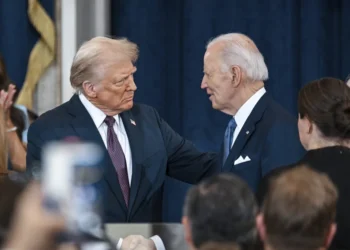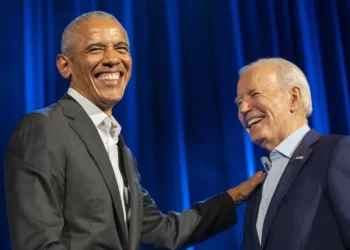A federal appeals court in Washington, D.C., was skeptical on Friday of the government’s arguments about President Donald Trump‘s authority to fire members of independent boards.
Justice Department lawyers contended during a hearing before the U.S. Court of Appeals for the District of Columbia Circuit that Trump is within his constitutional right to fire National Labor Relations Board member Gwynne Wilcox and Merit Systems Protection Board member Cathy Harris.
Wilcox and Harris sued the Trump administration, arguing the president does not have the authority to remove them because Congress designed the agencies to be independent of the executive. A lower district court ruled the firings were illegal, but the Supreme Court allowed them to go forward as the case makes its way through the courts.
The three-judge panel that heard the arguments included two Trump appointees, Judges Justin Walker and Gregory Katsas, and one Biden appointee, Judge Florence Pan. During Friday’s oral arguments, Pan was the most critical of the government’s position that Trump can remove Wilcox and Harris from their posts.
The Biden appointee was critical about what boundaries there would be to the president’s ability to remove officials from independent agencies, such as the NLRB or MSPB. She questioned Justice Department attorney Harry Graver about the government’s stance on the president’s ability to oust the chairman or governors of the Federal Reserve. Graver said that was a “distinct constitutional question, not before this court.”
“I think that what happens with the Fed and the questions [that] come with the Fed are distinct questions for another day because of its unique historical status,” Graver said.
Pan criticized Graver for not presenting a position, saying, “You coming here and not being willing to take positions on other agencies is not helpful to the court.”
Graver responded to questions about the separation of powers, including Pan’s concerns over moving independent agencies created by Congress under the president’s control, by arguing that it is within the president’s power to exercise oversight of the executive branch.
“There’s ways in which you can hypothesize a whole host of those exclusive powers being used for good, for bad, for something in between, but that is never a license for a separate branch of government to exceed their bounds and entrench upon the exclusive power of the president,” Graver said. “When it comes to principal officers who wield substantial executive power, I think the Supreme Court has been pellucid. They need to answer to the president.”
Katsas grilled attorneys for Wilcox and Harris on the functions of the boards on which their clients sat, and the attorneys attempted to downplay the agencies’ powers. The government has argued that the substantial power both boards hold means the president’s authority would be undermined were he denied the ability to fire their leaders.
“This is not an agency that has been doing lots of substantive rulemaking and carrying out its powers in the way that you know, the court has described as executive,” Deepak Gupta, attorney for Wilcox, said about the NLRB.
INDEPENDENT BOARD MEMBERS FIRED BY TRUMP URGE SUPREME COURT TO REINSTATE THEM
Wilcox and Harris, both appointees of former President Joe Biden, were axed by Trump shortly after he retook office in January. With both women fired from their respective boards, those bodies lack the quorum necessary to make critical decisions.
The case could set up the Supreme Court to review the president’s ability to fire officials from independent agencies, possibly overruling or affirming the 1935 decision in Humphrey’s Executor v. United States, which denied the ability for the president to remove such appointees except by following Congress’s instructions.

















